Hey, beautiful one!
How are ya today? I’m so tickled – so so tickled to announce our newest pattern by Emily Walton: Falling Stars Pullover
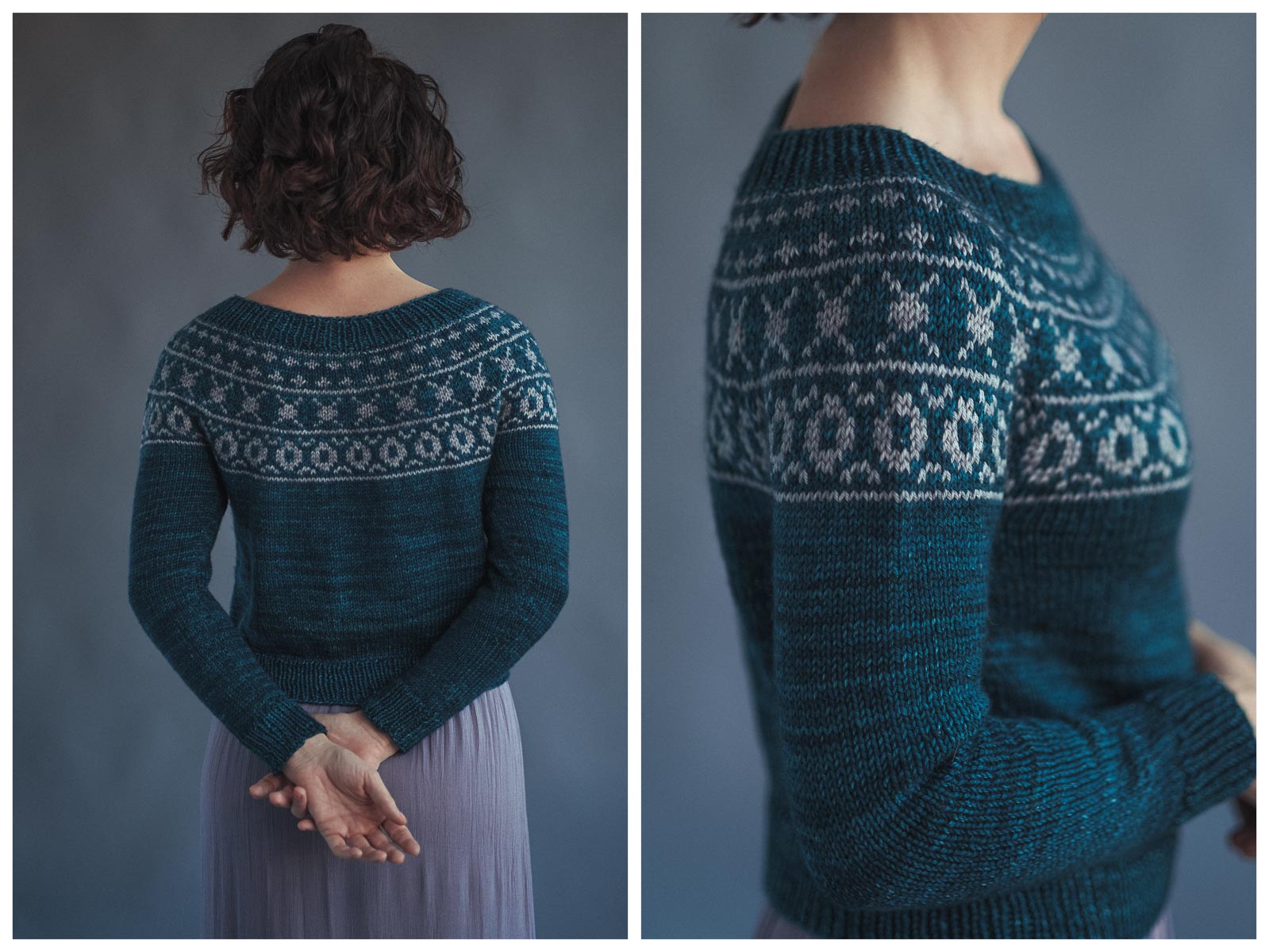
It’s a beeeeautiful colorwork (fairisle) knitted sweater pattern – worked top-down in the round and features lovely 2-color fairisle in the yoke.
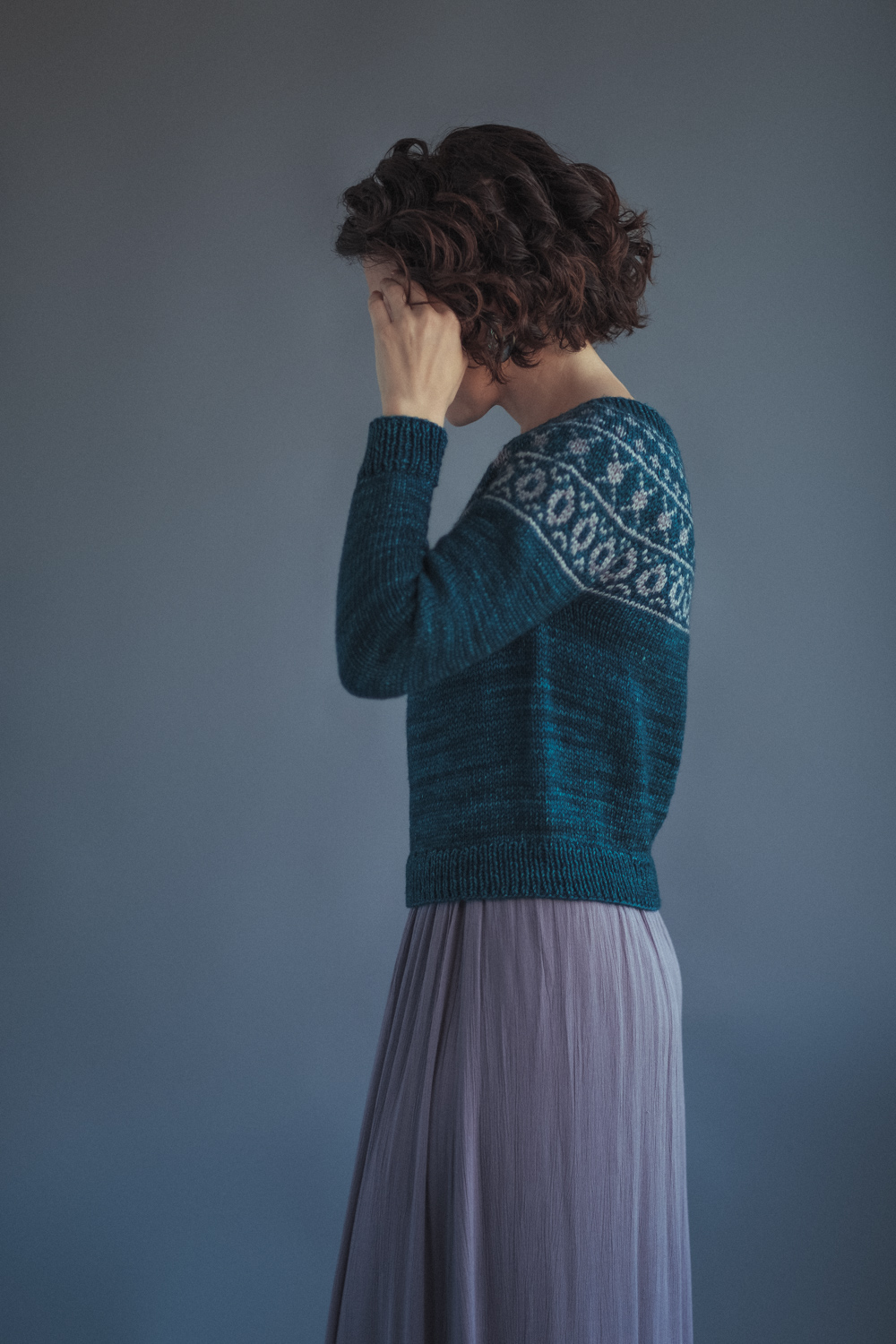
Tim and I were so inspired by this design we decided to try a new video format style – I hope you enjoy it! I also show you how to work a quick gauge swatch in the round. Check it out:
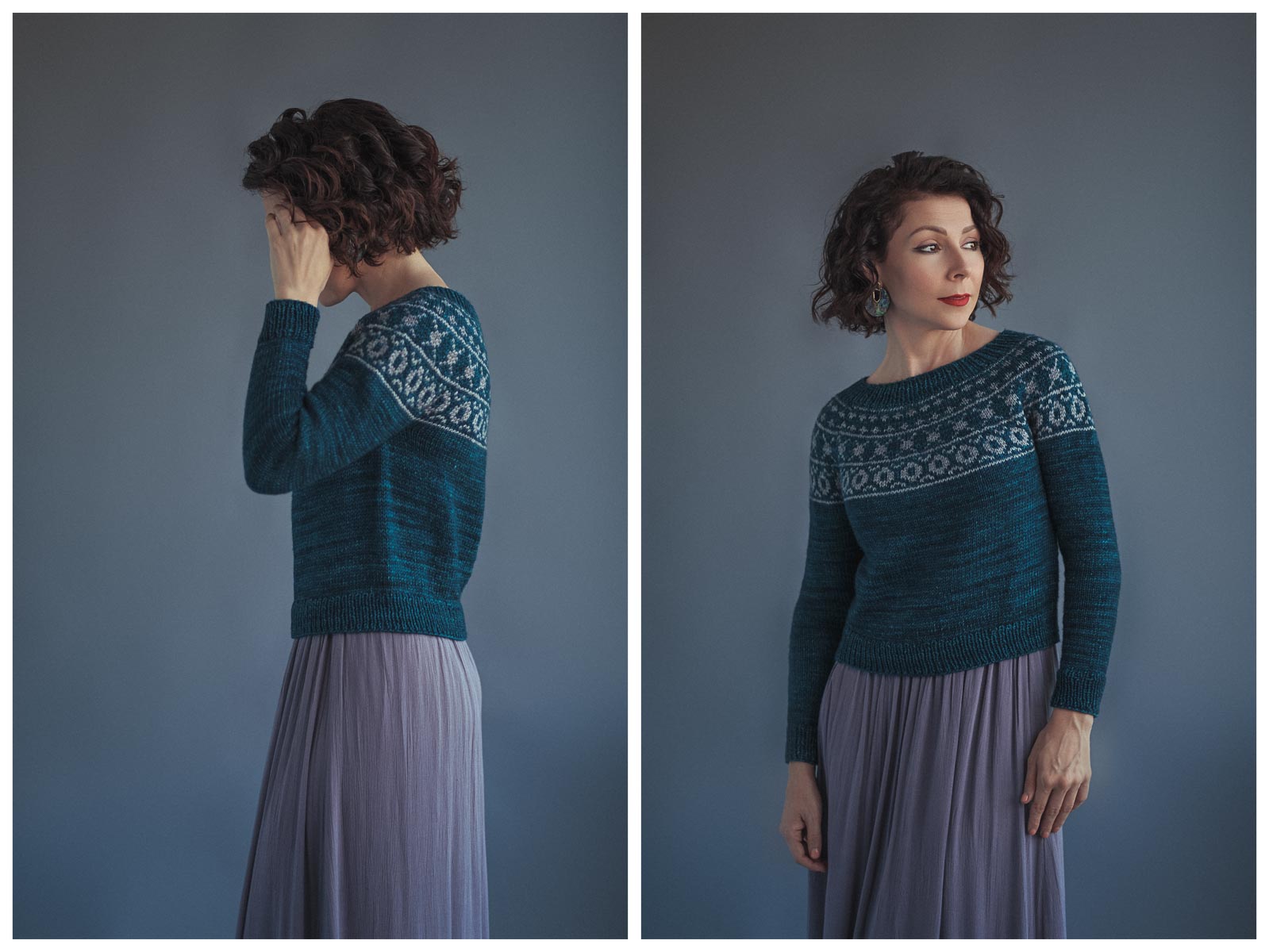

To knit a gauge swatch in the round, it’s quite simple. You’ll need circular needles – you’ll want to start with the needle size the designer recommends and the yarn you intend to use.
Cast on a few dozen stitches or so and knit the first row. Now, slide your knitting to the opposite needle. Pull your yarn loosely behind the knitting and knit the next row. Repeat that process over and over until you have a nice size swatch. You’ll have funny, big loops on the back of your work!
Doing a swatch this way rather than alternating knit and purl rows will give you a more accurate in-the-round gauge swatch.
Also, you could just knit a swatch fully in the round using the magic loop method, but this route saves you a smidgen of time. The quicker we can get to knitting, the better, eh?
When finished, cut your tail. Gently soak your swatch and block it. Just like you would your finished sweater.
Cut all those loops on the back so you can lay your swatch flat.
Then measure your stitches per inch and rows per inch. I like to use pins and a tape measure for this.
Compare with the designer. If you have too many stitches per inch, it means your gauge is tighter than the designer’s. Go up a needle size and repeat the entire process. If you’re getting too few stitches per inch, your gauge is looser than the designers. Go down a needle size and repeat the process.
Do this until you get the same gauge as the designer. Then begin knitting your beautiful sweater. Now your sweater should fit as intended.
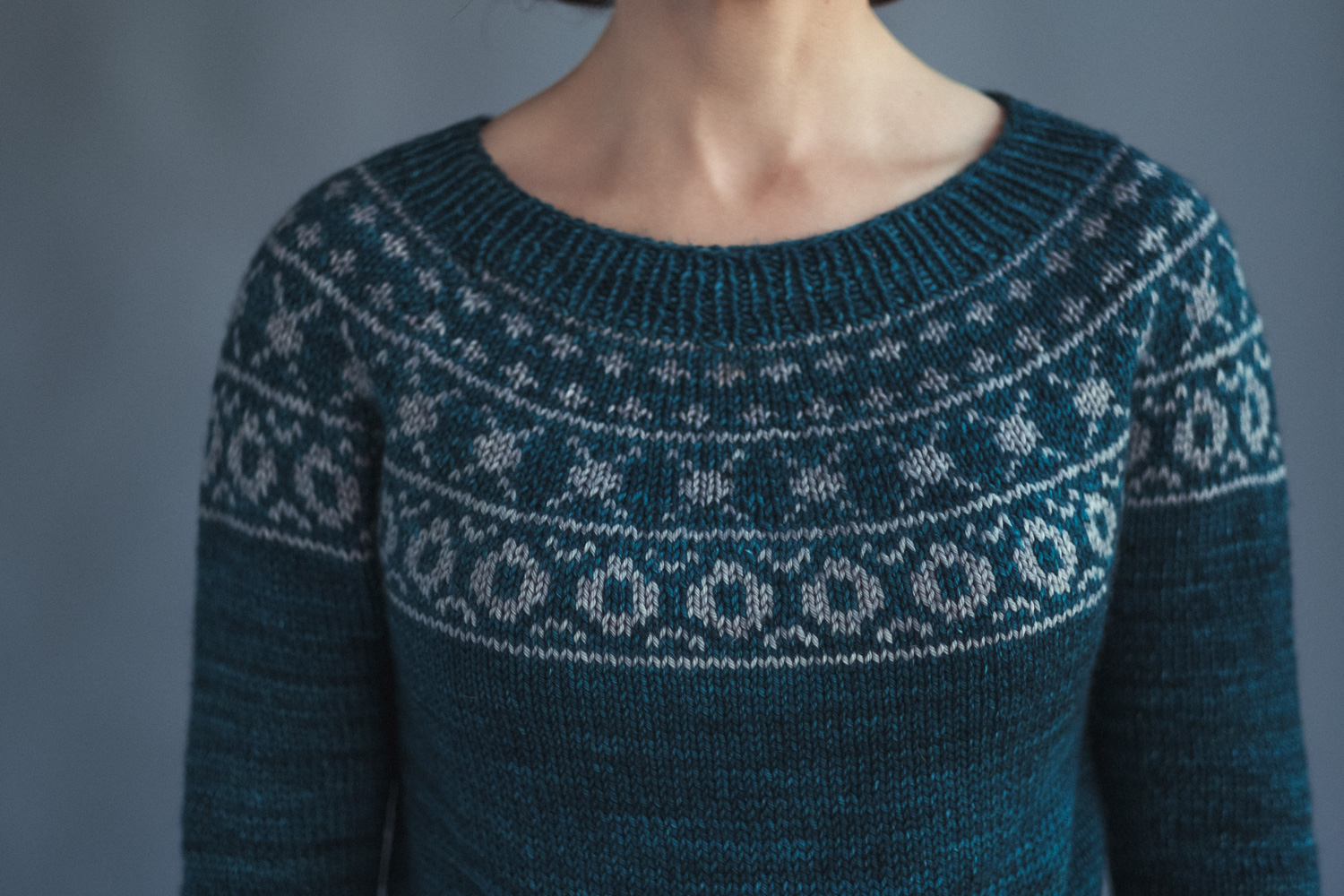
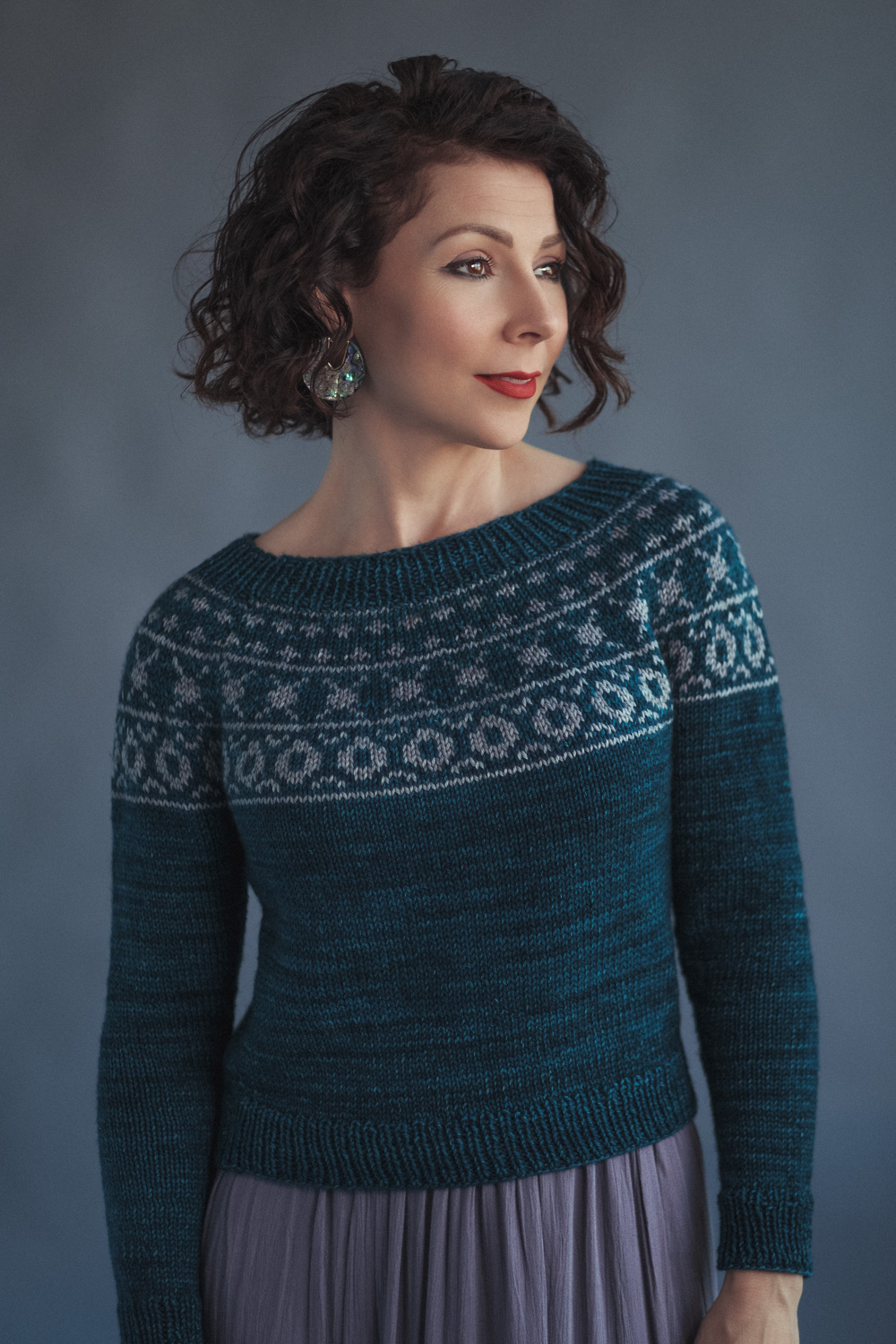
NOTE: I will say too, on this sweater, you may want to also check your fairisle gauge. So repeat that process working one of the fairisle charts and see what you get. Some people find their fairisle gauge is different than their stockinette gauge. If that is the case, just make a note of it and adjust your needle size when working that part of the sweater. Then switch when working the stockinette section.
If you’d love more info on fairisle knitting, we did videos earlier in the year which you can watch here.
I hope that is helpful! The pattern is here if you’d like to download it.
And the yarn we used is our luscious (new!) Enduring Worsted. A classic, durable, soft yarn that I had designed specifically for sweater knitting! It’s going to hold up well due to its tight twist and provide years of wearing delight!
Enjoy!
Chandi
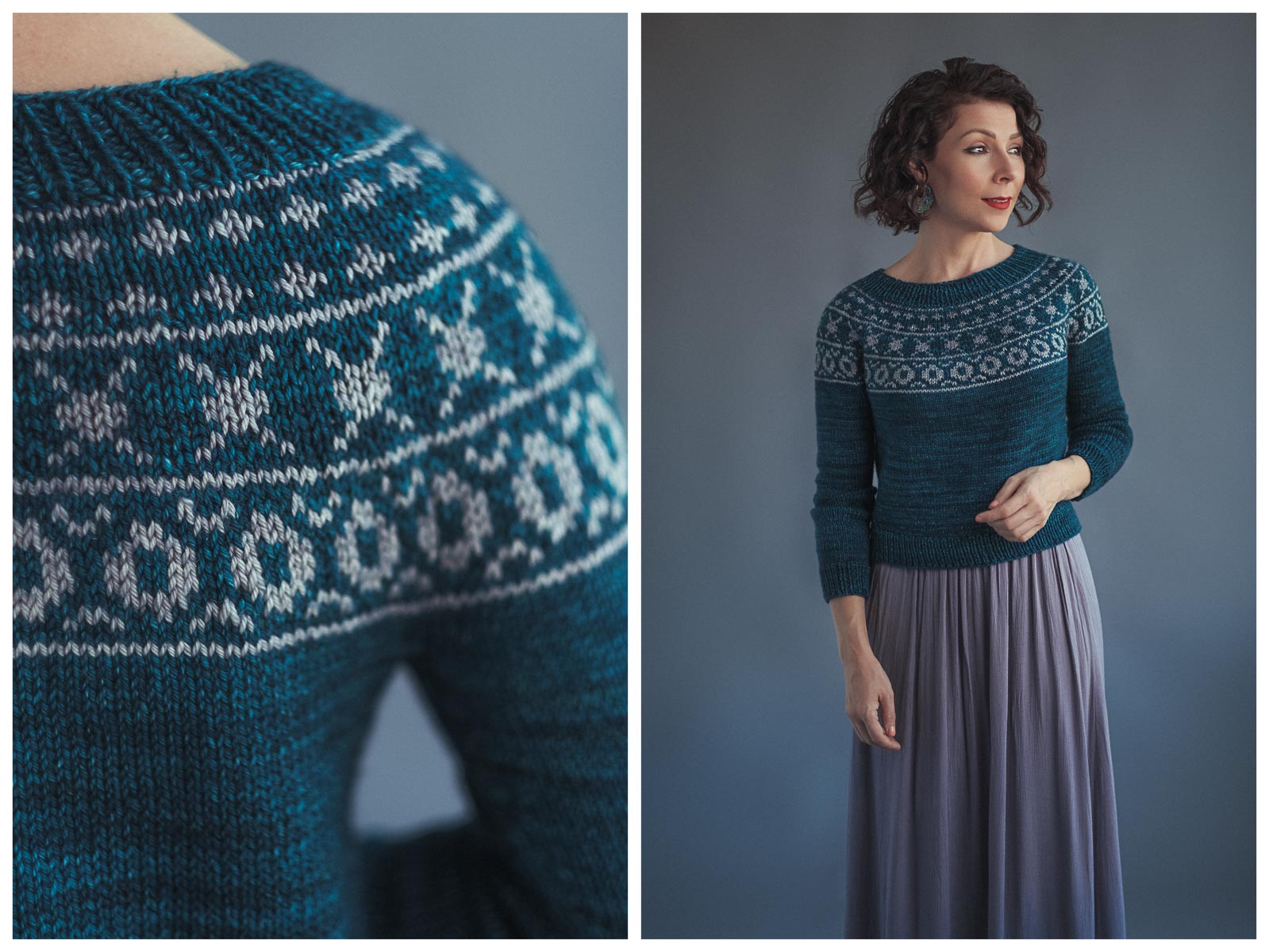
“I am a child of the Moon being raised by the Sun in a world walked by stars and a sky drawn with flowers.” — Zara Ventris
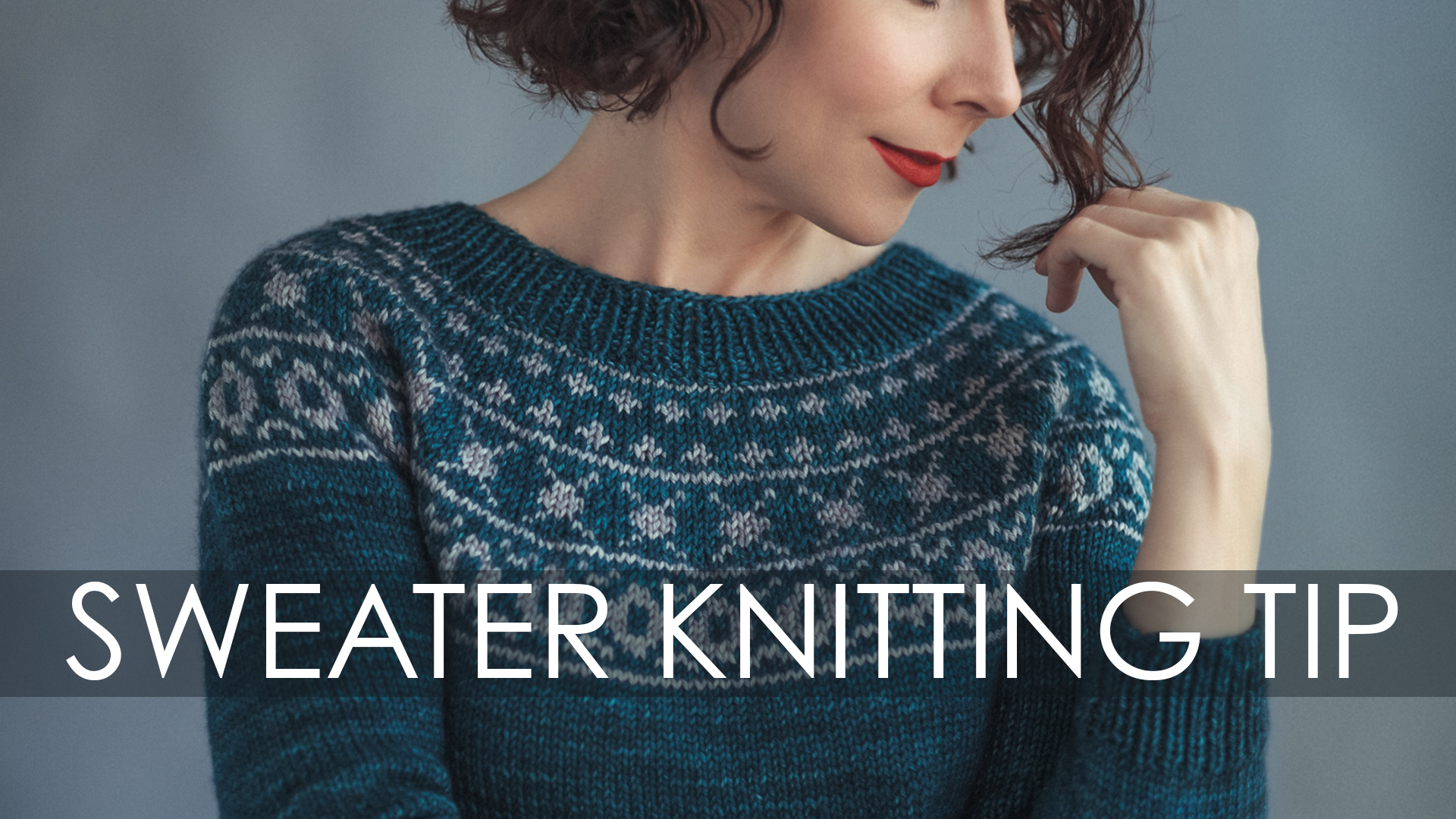
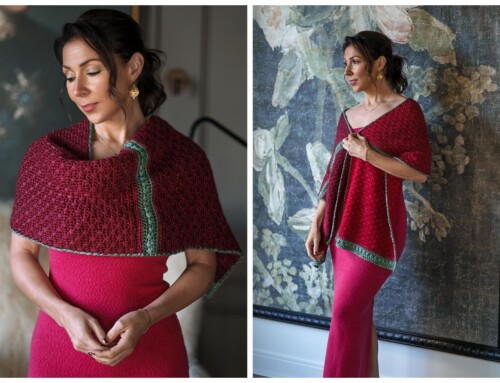

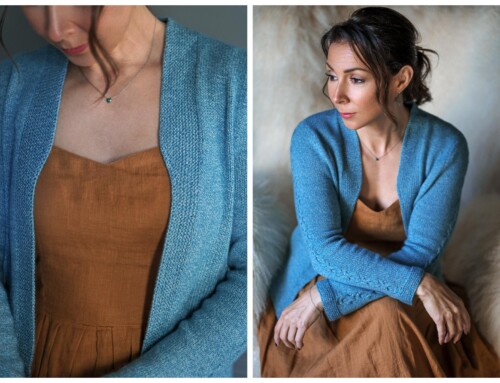
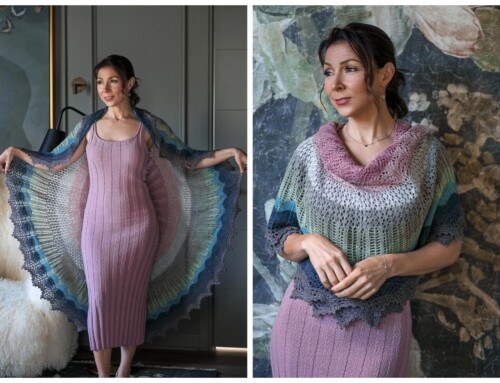
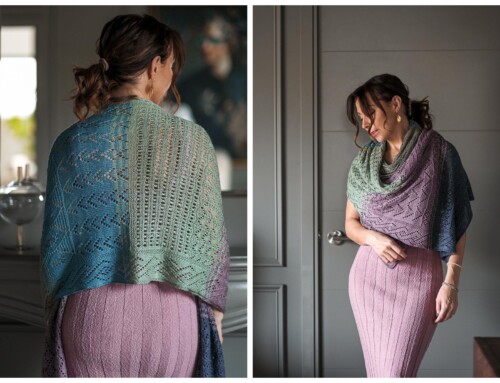
Such a beautiful sweater!!!
Lovely sweater! Just my cup of tea. I am new to your site, blog, patterns, and videos. You have a new fan! Thanks for sharing with us
Beautiful sweater. I am in South Africa would the yarn be just worsted not too sure old fashioned 3ply etc etc. Please let me know what I would need to use. Thanks
yes, it would just be worsted yarn, or if you go by the numbering system, number 4.
Interesting, but where can I obtain the pattern from?
You can find it here: https://www.expressionfiberarts.com/products/falling-stars.html
Hello, I hope this is were I can ask you a question about your Falling Stars pattern. I’m at the starting part of the pattern were you said to cast on 80 stitches then to increase across the rows XS ONLY: [k4, (k3, m1) 12 times]. Rep [ ] once more.
Do I do the following steps: k4, k3, m1, k4, k3, m1 then at the end should I have K4 instead of k3? So basically are you saying to k7 stitches than m1 across the round?
That’s’ where am having a problem just understanding the first increases.
Couldn’t ind a discussion board on Raverly under Falling Stars and that’s why I had to get in contact with you.
Thanks Again
Debra
Sure, Debra! Happy to help. XS: [K4, (k3, m1) 12 times.] Rep [ ] once more. So that means work K4, then repeat k3, m1 12 times. Then you’ll repeat the whole thing again. K 4. Then repeat k3, m1 12 times. You should go from 80 sts to 104, which is a 24-st increase. I hope that helps!